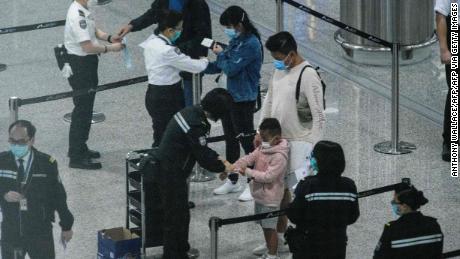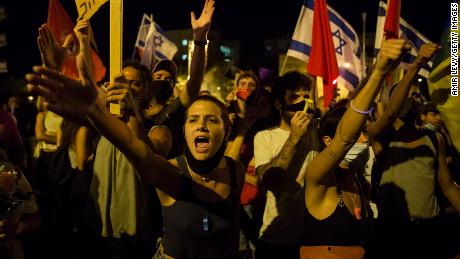Even gold standard nations are proving successes in containing Covid-19 are often only temporary
Yet even countries lauded for their fast and effective responses to Covid-19 are seeing large outbreaks and resurgences of the infection, as it becomes clear that successes in containing the virus are often only temporary.
Its government took further action to curb a second wave in March, as Hong Kong residents began returning to the city, bringing the virus back with them. Authorities barred non-residents from entering Hong Kong, halted transit through the city’s airport, and implemented strict quarantine and testing on arrivals.
For many weeks, daily virus cases were down to single digits, and sometimes zero.
Despite all this, the semi-autonomous region has been facing a “third wave” of infections since July 6, with authorities warning of potential “exponential growth” in cases.
The city has introduced a mask mandate for the first time, although many of its citizens wore them anyway.
“If this trend continues, it [will be] very difficult to handle the situation,” said Dr. Chuang Shuk-kwan of Hong Kong’s Centre for Health Protection, warning that the city’s testing capacity, quarantine facilities and hospital capacity were reaching the limit. In total, the city has reported 2,372 Covid-19 cases, and people are now being urged to stay at home.
Australia
Australia was another country held up as the gold standard for its pandemic response.
On February 1, Australia joined the US in closing its borders to foreign visitors who had recently been in China. As the virus spread, Australia barred entries from Iran, South Korea and Italy in early March, before closing its borders to all non-citizens and non-residents on March 19.
The country banned public gatherings and non-essential travel as part of a series of restrictions in late March and, for a time, the outbreak was considered broadly under control.
A spokesperson for the Australian Department of Health said in a statement to CNN in early May that “we have well and truly flattened the curve of cases and new infections.”
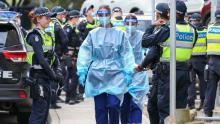
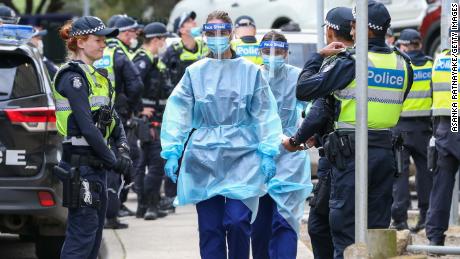
Medical staff wearing PPE walk into the Flemington public housing flats on July 5 in Melbourne, Australia after nine public housing estates were locked down.
“The next step beyond this will be to build confidence and momentum that will see our economy get back up and running and get Australians back up on their feet and moving ahead with confidence,” Morrison said.
Dr. William Haseltine, president of the think tank ACCESS Health International, held Australia up as an example to the US. He said the nation, along with China and New Zealand, had effectively dealt with serious outbreaks of the coronavirus and through testing, contact tracing and clear guidance had brought new cases down to single digits.

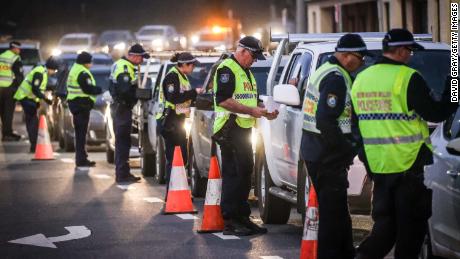
Australia was once a success story, but now the border between New South Wales and Victoria has been closed after cases spiked in the latter state.
The border between Victoria and New South Wales (NSW) — Australia’s two most populous states — was closed for the first time, lockdown was reimposed and masks were made mandatory last weekend. Buying food, exercise, going to work and care are the only exceptions to the stay-at-home order for Melbourne and the surrounding area.
Victoria recorded 403 new cases of Covid-19 on Wednesday, according to Premier Daniel Andrews, the third-highest daily increase in cases since the pandemic began, slightly down on Tuesday’s record of 484 new cases. Australia now has more than 13,000 cases and 140 deaths, according to Johns Hopkins University (JHU).
Japan
Japan also seemed to have responded effectively to the coronavirus.
On May 25, Prime Minister Shinzo Abe lifted its state of emergency, saying in a briefing that “we were able to end the outbreak in about one month and a half with Japan’s own way.” He said the nation would gradually increase social and economic activities to create a “new life” with the coronavirus.

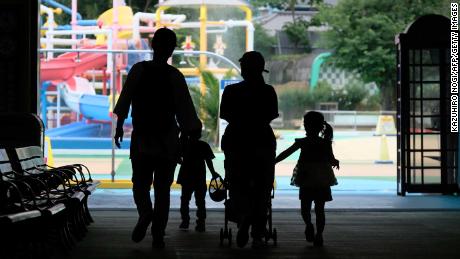
Parents and children enter a swimming pool open to a limited number of visitors as a preventive measure against coronavirus at Tokyo’s Toshimaen amusement park on July 13.
Business and social activities began returning and Tokyo governor Yuriko Koike said that museums and sports facilities would reopen with safety conditions, and schooling would be phased back in.
The Japanese government even launched a new travel initiative to encourage domestic travel.
But infections have since started to surge, and Japan recorded its highest daily tally of 981 cases on Thursday, according to the Ministry of Health, along with two deaths. The total number of cases in Japan is now almost 29,000, with 994 deaths, according to JHU.
Several prefectures with the largest cities posted record-high numbers on Thursday.
Tokyo governor Yuriko Koike reported a record 366 new Covid-19 cases — the first time it’s topped the 300 mark. Of the patients, 60% are aged in their 20s and 30s, according to Koike.
New research from Japan suggests that many coronavirus clusters outside of hospitals may have been started by people who are younger than 40 or don’t feel sick, underscoring the importance of measures, such as face coverings, to slow the spread.
Israel
With early travel restrictions and sweeping closures, the nation had largely contained the virus spread, recording a mortality rate that was far better than many countries in the Western world. As coronavirus tore across the US and Europe, Israel was moving towards reopening.
Prime Minister Benjamin Netanyahu routinely held news conferences about this success, warning about the newest challenges and taking credit for the victories.
On April 18, almost exactly two months after Israel discovered its first case, Netanyahu declared that the country had succeeded in its fight, setting a global example “in safeguarding life and blocking the outbreak of the pandemic.” He predicted Israel would set an example in restarting the economy as well.
But the second wave its health experts are now cataloging appears to be tracking for a very different ending.
Just weeks after reopening restaurants, malls and beaches, Israel was seeing a 50-fold surge in coronavirus cases from approximately 20 new cases a day in mid-May to more than 1,000 less than two months later.
In early July, Netanyahu announced that gyms, pools, event halls, pubs and more would close indefinitely, while restaurants and places of worship would operate with limited numbers. Desperate to avoid a complete lockdown with unemployment already at more than 20%, Netanyahu issued a stark warning.
“All citizens of Israel know, or need to understand, that we must now take limited actions, with as minimal an economic impact as possible, in order to avoid those extreme measures that will paralyze the economy,” he said.
But on July 17, Israel re-imposed a series of strict limitations, bringing the country closer to a second complete lockdown, as cases hit another daily record. The government announced that restaurants would be limited to take-out or delivery service, gatherings limited to 10 people indoors, and stores, malls, museums and salons would close on weekends. From Friday, beaches will also close at weekends.
On Thursday, Israel hit a new record of 1,819 new cases within 24 hours. The previous record of 1,758 was set one day earlier.
At a cabinet meeting that day, Netanyahu warned: “We are making every effort to avoid a general lockdown… We do not have many choices; it is not a normal situation. This is not a situation in which we can do all these processes that take days and hope that everything will be fine. The disease is changing speed and we must change together with it.”
Israel’s top public health official, Prof. Siegal Sadetzki, resigned, writing on Facebook: “To my regret, for a number of weeks the handling of the outbreak has lost direction. Despite systemic and regular warnings in the various systems and in the discussions in different forums, we watch with frustration as the hour glass of opportunities runs low.”
Not an exact science
Concerns are growing elsewhere. On July 1, people in the Czech capital, Prague, built a 1,600-foot table and held a massive public dinner party to celebrate the end of the country’s coronavirus lockdown.
The country imposed strict, early rules and masks became compulsory for everyone anywhere outside their home from March 19.
But a spike in cases during restriction easing has seen various measures reimposed. Czechs will again have to wear face masks indoors at all events with more than 100 people, including weddings and funerals, beginning on Saturday. All such events will be limited to 500 people, down from 1,000, the Czech Ministry of Health announced Friday.
In Prague, people must wear face masks again in all medical facilities, including doctor’s offices and pharmacies. People still have to wear face coverings on the subway, the city announced. The country has now reported 14,800 cases and 365 deaths, according to JHU.
While the new case numbers remain low in many of these countries compared to nations where the pandemic is running rampant — such as the US and Brazil — experts say the latest rise in cases shows that, despite even the most stringent anti-epidemic controls, the virus still poses a threat.
And since social distancing and behavioral changes are not an exact science, the resurgences emphasize that completely eradicating the risk may be impossible until a vaccine is found — and the waves of infection and new lockdowns are set to continue.
CNN’s Vanessa Yung, Isaac Yee, Angus Watson, Sol Han, Yoko Wakatsuki, Junko Ogura, Kaori Enjoji, Tomas Etzler, Ivana Kottasova and Oren Liebermann contributed reporting.
![]()




